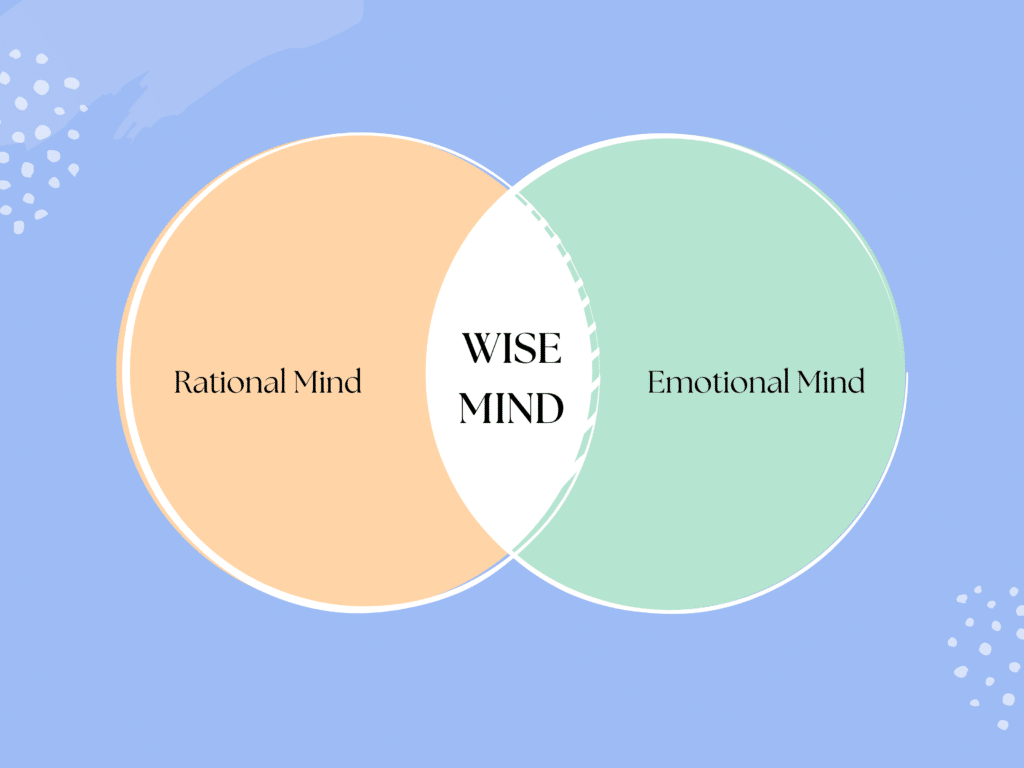What is DBT?
Many people reach out to our Vaughan clinic asking for DBT. And it can be a very helpful approach to dealing with a variety of mental health challenges such as anxiety, depression, suicidal thoughts, and others.
What many people do not realize is that DBT was originally created to help people who were diagnosed with “Borderline Personality Disorder.” Also known as BPD, common features include emotional control issues, attachment (relationship) problems, self harm and suicidal thoughts. It is also frequently offered as part of group therapy.
At Health & Happiness: Counselling and Wellness, we often use a DBT-informed approach to helping our patients. It could be introducing the concept of the “Three Minds” to help balance their emotions and rational thoughts. Mindfulness is an important part of DBT as well. It helps patients understand how to tolerate their thoughts, emotions, and moods. “Riding the wave” helps people learn how to experience their emotions and thoughts in more productive ways.

Because many people suffer from extreme anxiety and depression, the techniques and concepts of DBT can help them too. Our definition of DBT-informed therapy is simply using a DBT lens when working with patients.
Here’s an example: when we have anxiety we want to feel better. Our brain can tell us to avoid whatever is causing the problem. But … that causes a whole new problem. By avoiding, we don’t get to experience how the anxiety may just go away on its own. “Riding the wave” can help a person experience their anxiety AND how it will naturally come to an end. This can be a very powerful therapeutic technique! There’s also video on our site (don’t expect Hollywood quality though!) that you might find interesting.
Four Main Components
- Distress tolerance. An important part of coping with distress is learning to tolerate it. Not all situations are created equal. Learning to distinguish between large and small problems helps with emotional balance.
- Mindfulness. If anxiety is about the future and depression the past, then focusing on the present is key. We use different techniques to help patients focus their attention on their exact moment in time. It really can work!
- Emotional Regulation. Emotions that are out of control can be very harmful. Anger is not a problem … until it leads to violence. Sadness is normal … until it leads to withdrawal from normal routines. Learning to control emotions is a key part of DBT, as well as any good therapeutic approach!
- Interpersonal Effectiveness. Relationships can be hard. People are not always logical. DBT can help to improve a patient’s ability to manage their relationships. By learning healthier methods to interact with people, overall social health can improve.
Getting Help and Taking the Next Step
Want to learn more about DBT?
There are many great resources online that can help you learn more about DBT. CAMH has a great overview as does DBTSelfhelp.
Next Steps
Our therapists in Vaughan offer a no charge virtual consultation to everyone. If you are interested in learning more about each therapist, you can see their bios at hhcw.ca/our-team. To book a consultation, it is as easy as going to our online booking portal and finding a time that works best for you. You can also email admin@hhcw.ca for help!
